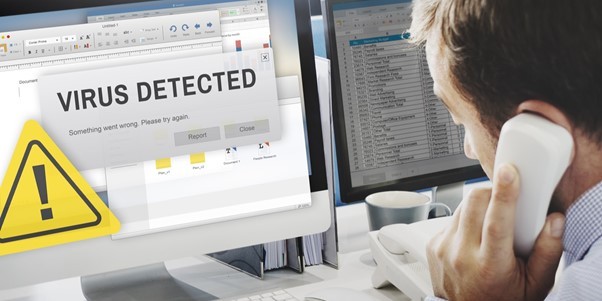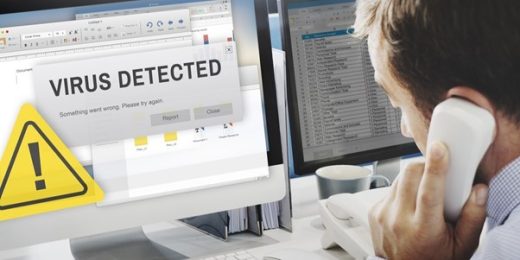Protect yourself from hackers and malware while working from home, Building Design Tips, Online Advice
Protect Yourself from Hackers and Malware
17 Jan 2022
It is important to know how to be safe while working from home. This has been proven time and time again, and the statistics and research are out there to show it. The numbers tell us that around half of all organizations (50%) will allow employees to work remotely full-time, and will continue to do so even when the pandemic is over. In the rare cases that work cannot be done via a laptop and an internet connection, organizations will try to innovate and accommodate changes in the system for the employees in these sectors. Even still, there is now a great demand for remote jobs in the increasingly digitally transformed job market.
The post-pandemic world is now a world replete with a workforce of WFA or WFA individuals (Work From Home/Work From Anywhere.) Thousands of organizations have made the switch to accommodate remote workers, and are doing so as we speak. Although this model is nothing new, and naturally working from a laptop allows one mobility, modern-day life and government-mandated rules have indeed turned office buildings into barren landscapes.
Working from home, or working from a remote location, has its advantages and its disadvantages. Some of these advantages include a proven increase in productivity, significantly fewer expenditures for both the employee and the employer, as well as a workforce that is more rested and happier because the difficult aspect of the physical commute to work has been removed from the equation.
The disadvantages of such a work system have also come into the light. First of all, the connection between the employer and employee has decreased as a result of not being physically present. Furthermore, being on-site (physically at work) means interacting with team members and having the ability to ask for help. Secondly, loneliness and dissatisfaction as a result of being at home all the time have set in for a significant portion of the workforce. Most importantly and thirdly, remote work is a cybersecurity risk for all involved and this is perhaps the single disadvantage that overshadows all the others.
The dangers involved with remote work are manyfold; work data that is being sent through unsecured networks like home routers, and unsecured devices being used to access work-related information daily. Therefore, there are great cybersecurity risks that need to be addressed with strict measures to reduce the risks involved.
What Are Hackers And What is Malware?
Speaking of remote work risks, there are three main pillars to mention; hackers, malware, and human error. Since remote work ties employees to their laptops/home computers and their wits, counting on them to be safe and responsible while working online, issues are bound to happen when this process is less supervised and less controlled. These issues stem from hackers, malware, and employee error.
Now we come to hackers or cybercriminals. These malicious individuals are everywhere, and a cyberattack takes place every few seconds somewhere on the internet because these folks like to exploit people for money, hack into a database, or otherwise. Cybercrime comes in many forms, but most often when it comes to remote work the kind of cybercrime employees will experience directly is phishing scams (fraudulent emails designed to hoover credentials from people.) At a more serious level, companies can experience brute force attacks, denial of service attacks, and ransomware attacks too. At that point, all data is severely compromised.
What about malware? Well, malware, like hackers, is also ubiquitous. Malware, or malicious software, can be accidentally downloaded with the click of a button. It can also infect an employee’s computer via; shady downloads, pop-up ads, and again via phishing emails. Malware comes in the form of; viruses, keyloggers, trojans, worms, crypto miners, and much more.
Finally, we arrive at employee/human error. Computer and network configurations are very often misused, misunderstood, and abused (mostly unbeknownst to the person.)Cybersecurity risks always occur where IT security is weak and best practices are not applied. For that reason, employees often misconfigure their systems, do not apply important security updates or worse share their passwords with someone. When it comes to passwords, a large portion of the workforce has simple passwords that can be hacked, too. Personal devices like smartphones are also a great risk for employers who cannot supervise or control what happens on these devices or how they are configured.
There is also the possibility of a device being physically lost, or people snooping in on an employee’s work at public places. These scenarios are often forgotten but are key risks,
Measures to Take to Protect Yourself While Working From Home
Now that we understand all the risks of working from home, it is time to take action and apply the proper measures to reduce and mitigate these risks. Most of these recommendations, standards, and measures are built upon common sense and an understanding that the internet is not a safe place in the slightest.
When it comes to business cybersecurity for remote employees and employers, the rules are the same for both sides as both sides can be equally vulnerable. There is a popular saying in information security that goes: “Trust but verify.” There is a second saying that goes: “Verify, verify, verify.” These adages exist for a reason and point to the fact that the best defense is to assume the worst from the start and build from that. You might even want to work with an expert cyber security service to see what measures could be put into place to improve things for your business and give you the strongest protection possible
It is vital to control risk and nip any security vulnerabilities in the bud from the start. It is also very important to comply with cybersecurity frameworks and internet best practices. Finally, here is a list of measures that every employee and employer should understand before taking part in the remote working environment;
- Using secure passwords on all devices
- Using multi-factor authentication on all devices if possible
- Training employees on internet best practices at the minimum
- Employing strict access and privilege rules
- Making sure employees secure their home routers and devices
- Making sure employees understand encryption measures
- Understanding the risks of social media and how that can affect work security
Comments on this Protect Yourself from Hackers and Malware While Working from Home article are welcome.
VPN
VPN Posts
Why Everyone is Getting on The Anonymity Train
iTop VPN offers privacy protection and quick access
iTop VPN is the fastest and most secure
What things to check before using VPN for PC?
Building Articles
Residential Architecture
Comments / photos for the Protect Yourself from Hackers and Malware While Working from Home page welcome


